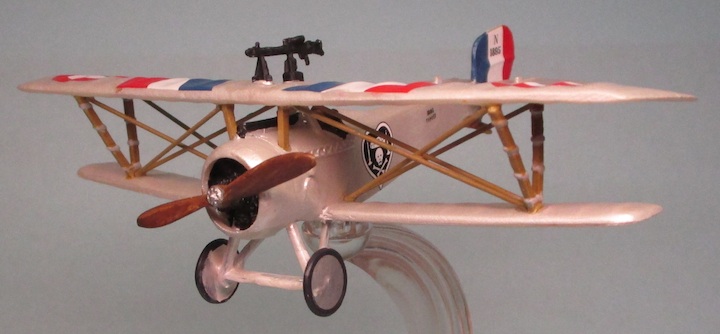Nieuport 17

Lt. Charles Nungesser
Service Aeronatique, Escadrille N.65, 1916
(Wings of the Great War WW13001)
- Engine: One 110 hp Le Rhone rotary
- Span: 26 ft 11 in
- Length: 18 ft 10 in
- Height: 7 ft 7 in
- Weight: 825 lb empty; 1,246 lb loaded
- Crew: One
- Max Speed: 110 mph at 6,560 ft
- Service Ceiling: 17,400 ft
- Duration: 2 hr
- Armament: One fixed, forward-firing Vickers and one Lewis machine gun
- Notes: Designed as an improvement upon the Nieuport 11, the Model 17 was first flown in January 1916. This French-built fighter was more powerful and more refined than the Nieuport 11, and its rate of climb and maneuverability were superior for its time. The Nieuport 17 had a wide top wing and a narrower lower wing, which made it more of a "sesquiplane" than a biplane ("one and a half wings"). Its single-spar construction meant that the lower wing was weak and prone to disintegrating in flight, but this weakness didn't stop the Nieuport 17 from going on to become one of the most successful fighters of WWI.
The fast, maneuverable, Nieuport 17's proved potent in the hands of French aces, including Nungesser, Guynemer, and Navarre. One of the most flamboyant French aces, Nungesser had a reputation for indiscipline, but ended the war with 43 official victories. He adopted the title "Knight of Death" with the distinctive black heart encompassing a skull and crossbones with candles and coffin for his aircraft marking. Later he was attached to the famous Lafayette Escadrille with its American volunteers.



 Up
Up





 Up
Up